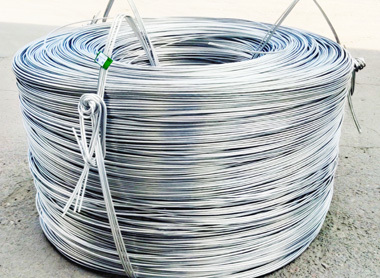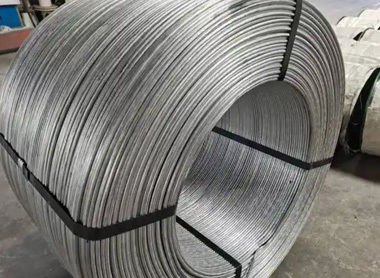Welcome to Tianjin Jinhe Bimetal Wire Co., Ltd.
The production process of pure aluminum electrical round rods.
2022-01-10
1. Material Preparation and Melting
Select raw materials: Use high-quality pure aluminum ingots as raw materials to ensure the composition of the aluminum rods is pure and meets the quality requirements for electrical round aluminum rods.
Aluminum ingot melting: Place the aluminum ingots in the melting furnace and heat them to a molten state. During the melting process, it is necessary to control the temperature of the molten liquid and the refining process to ensure the quality of the aluminum liquid.
2. Alloying and Refining
Preparation of alloy molten liquid: Add an appropriate amount of aluminum-based intermediate alloy, such as boron, titanium, rare earth elements, etc., to the molten aluminum liquid to improve the performance of the aluminum rods. Then stir evenly for a period of time (e.g., 20-40 minutes) to obtain the alloy molten liquid.
Refining treatment: Use high-purity nitrogen or argon to spray refining agents into the alloy molten liquid for refining treatment to remove impurities and gases from the molten liquid. After refining, skim off the dross and sprinkle a covering agent, then let it sit for a period of time (e.g., 12 hours or 40-60 minutes) to allow the molten liquid to calm and become uniform.
3. Casting and Continuous Rolling
Continuous casting ingots: Continuously cast the refined alloy molten liquid into aluminum rods or ingots through casting equipment. During the casting process, it is necessary to strictly control the casting temperature, casting speed, and cooling conditions to ensure the quality of the castings.
Continuous casting and rolling: Send the castings into the continuous casting and rolling production line, where they are rolled into round aluminum rods through a continuous rolling process. During the rolling process, it is necessary to control the rolling speed, rolling temperature, and process lubrication to ensure the quality and production efficiency of the aluminum rods.
4. Subsequent Processing
Heat treatment: Perform heat treatment on the rolled aluminum rods to improve their microstructure and mechanical properties. The heat treatment process should be optimized according to the alloy composition and performance requirements of the aluminum rods.
Stretching: Use a stretching machine to stretch the heat-treated aluminum rods to reduce their diameter and increase their strength. During the stretching process, it is necessary to control the stretching ratio and rate to ensure the strength and ductility of the aluminum rods.
Pickling: Use acid solution to pickle the aluminum rods to remove the surface oxide layer and impurities. During the pickling process, it is necessary to control the concentration and time of the acid solution to avoid corrosion of the aluminum rod surface.
Surface treatment: Apply a layer of oxide film or other protective layer on the surface of the aluminum rods to enhance their corrosion resistance and wear resistance. The surface treatment process should select appropriate protective layer materials and process parameters.
5. Inspection and Packaging
Inspection: Conduct strict inspection of the processed aluminum rods, including appearance inspection, size measurement, performance testing, etc., to ensure their quality meets standard requirements.
Packaging: Bundle and package the inspected aluminum rods that meet the standards, and prepare for transportation. During the packaging process, care should be taken to protect the surface of the aluminum rods from damage.
Previous Page:
Next page:




